Your cart is currently empty!
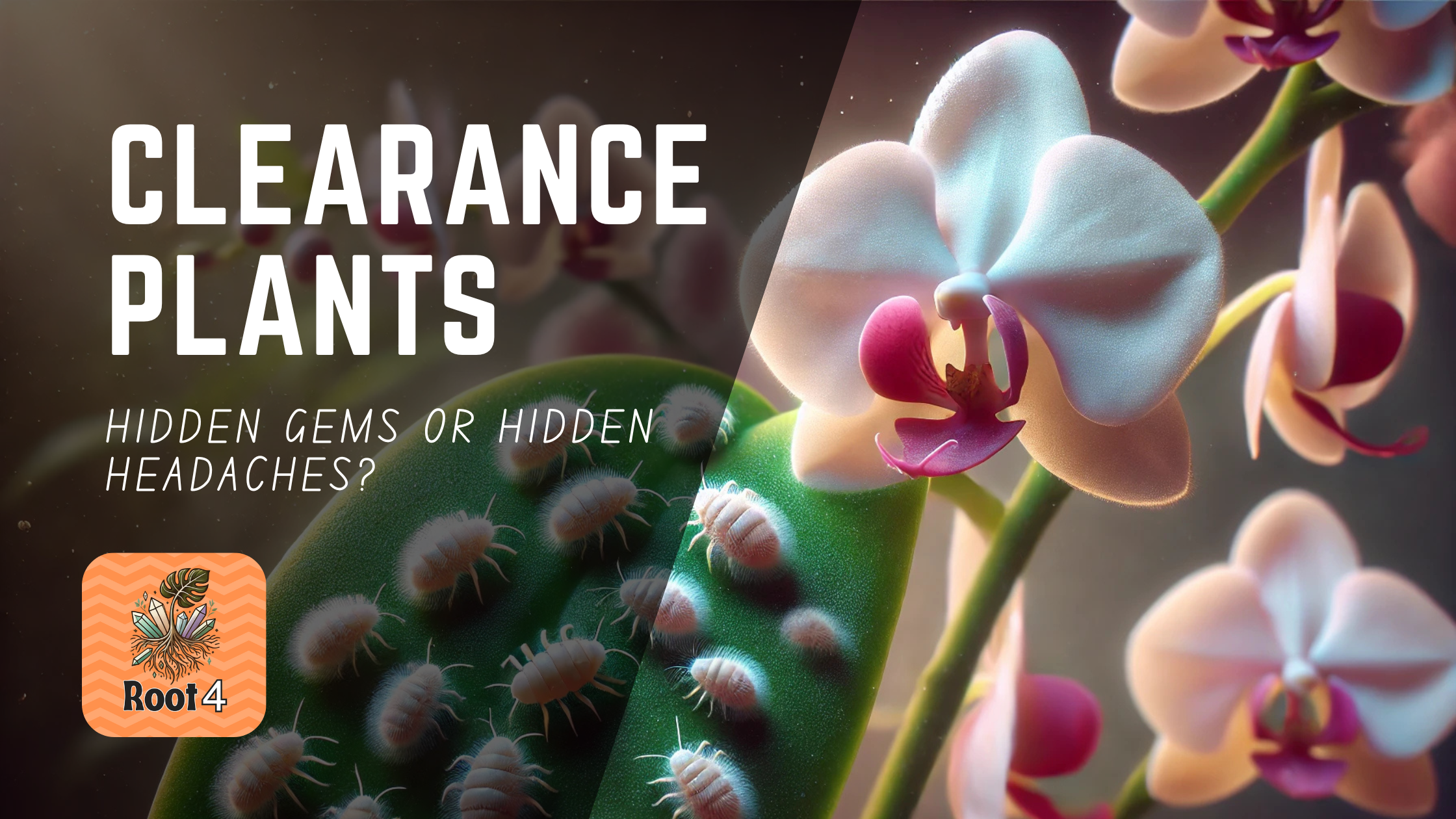
Clearance Plants: Hidden Gems or Hidden Headaches?
There’s something incredibly satisfying about rescuing a clearance plant from a store shelf. You see a struggling plant, marked down to just a few dollars, and think, “I can save this.” I do it all the time. But over the years, I’ve learned that clearance plants often come with hidden problems. In my experience, roughly 70% of clearance plants have some sort of issue—whether it’s overwatering, underwatering, nutrient deficiencies, or, worst of all, pests.
Recently, I had a firsthand reminder of just how risky clearance plants can be.
The Mealybug Invasion: A Cautionary Tale
Back in the winter, I picked up two orchids on clearance. They were still wrapped in their store plastic and seemed okay at first glance. Since it was cold, I kept them in their own spot for a while, longer than my usual isolation period for new plants. This turned out to be a blessing in disguise.
Fast forward two months later, and I noticed something alarming—mealybugs. I’ve never had mealies in my collection before, and none of my other plants showed signs of them. That meant they must have been hiding on the orchids when I purchased them.
Upon closer inspection, I found them in the sneakiest places:
- Under the store’s plastic plant tag
- On the stakes supporting the orchid stems
- Specifically under the wire wrap securing the stems to the stake
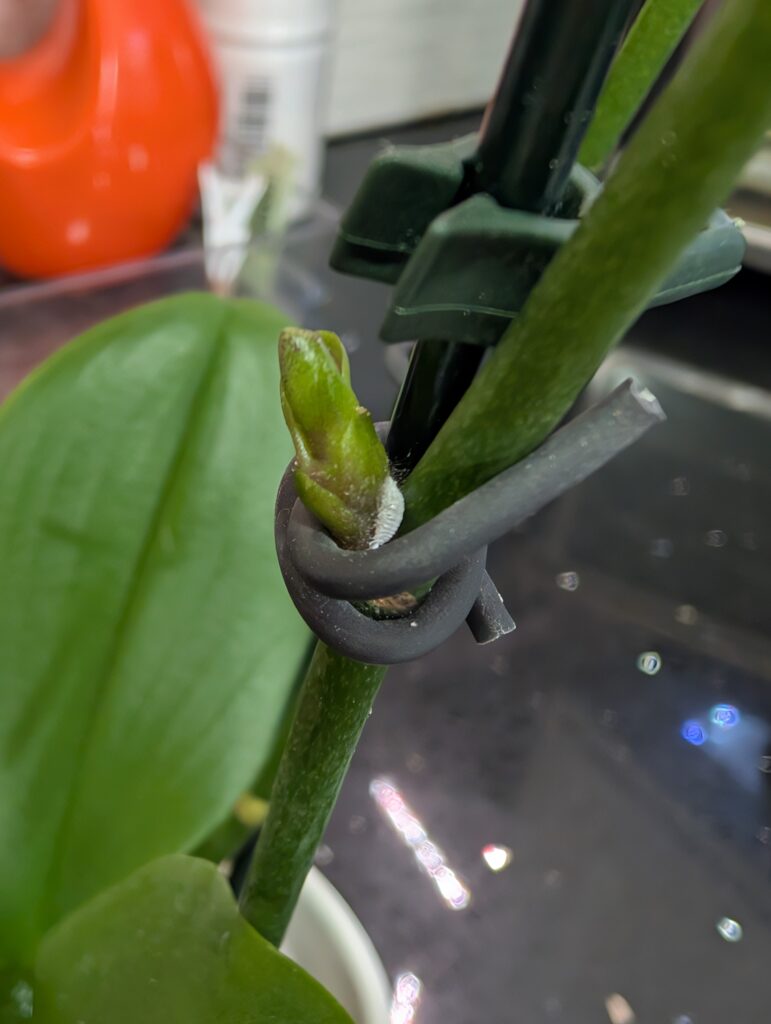
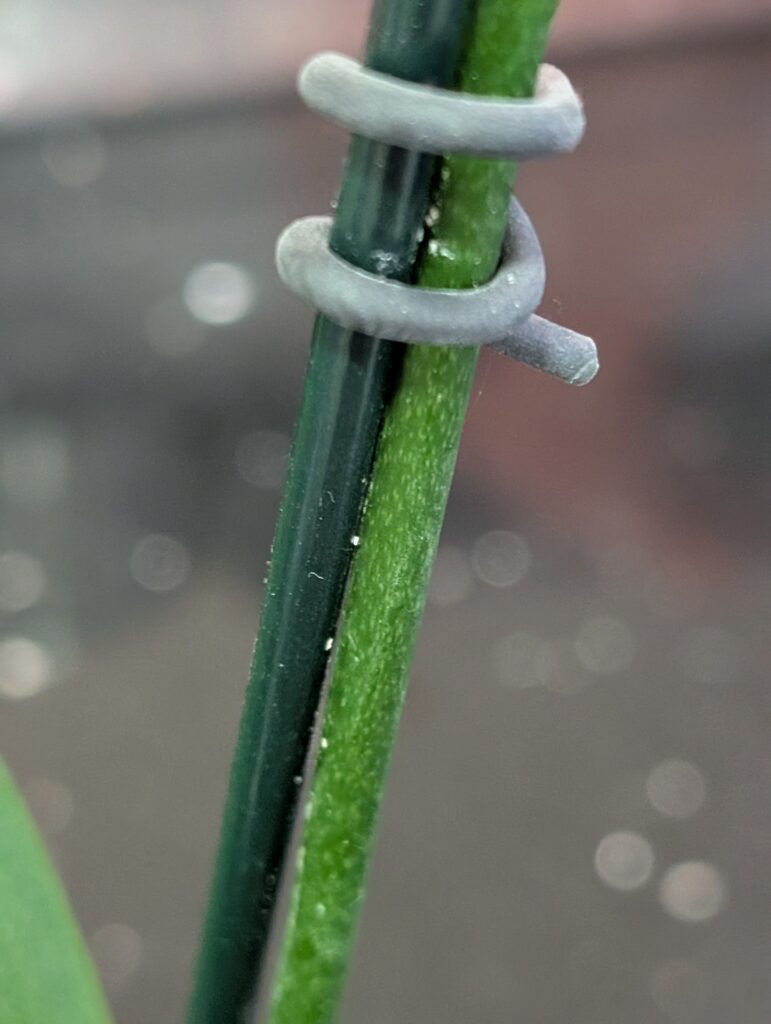
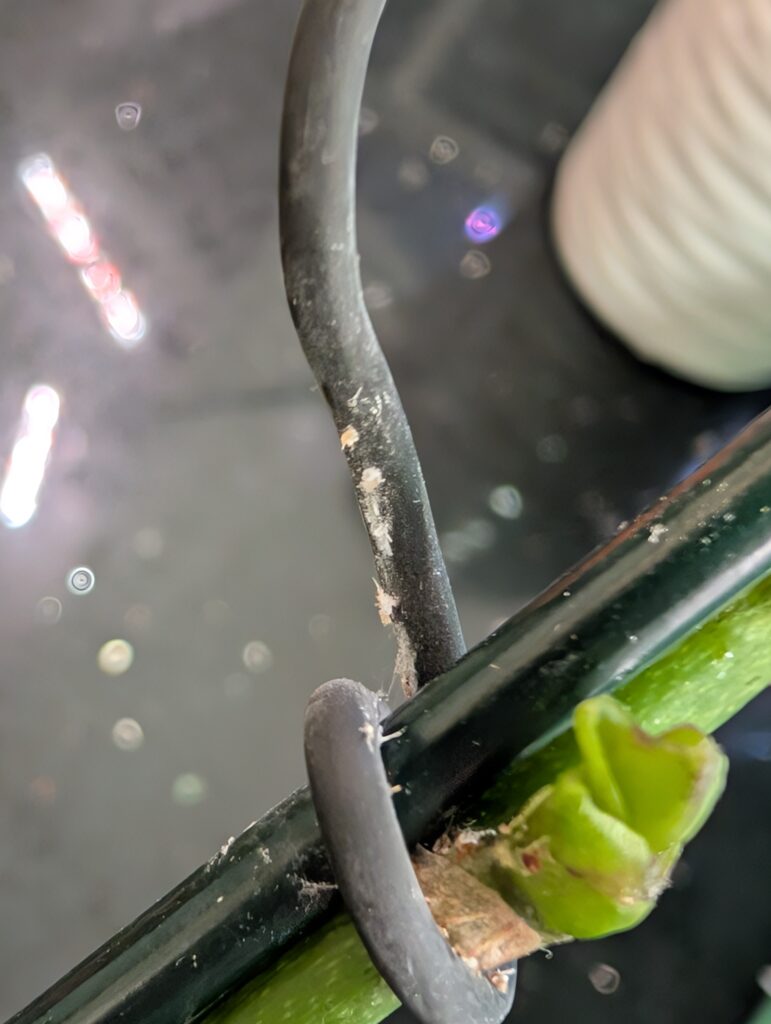
If I had placed these orchids among my other plants sooner, the mealybugs could have spread before I even noticed. Thankfully, I caught them early. But dealing with them was a process.
How I Treated the Mealybugs
To completely remove the infestation, I had to:
- Spot treat with rubbing alcohol – Using a Q-tip, I applied alcohol directly to any visible mealybugs to kill them on contact.
- Wash the plants in mild soapy water – This helped dislodge any pests that were hiding.
- Do a second round of alcohol treatment – After washing, I went back with a Q-tip and rubbing alcohol to get into every crack and crevice just in case any bugs were still lingering.
- Repot the orchids in fresh orchid medium – I discarded all of the original bark instead of composting it, just in case pests or eggs were still present.
- Wash and reuse the pots – I thoroughly cleaned the pots before reusing them to prevent any lingering pests from reinfesting the plants.
It took patience and multiple treatments, but eventually, I got rid of them.
Is a Clearance Plant Really a Deal?
If you’re up for a challenge, and the reward outweighs the risk in your situation, go for it! I built my original plant collection with mostly clearance plants and found some great deals. And a handful of them had no issues at all.
However, for any plant enthusiast, clearance plants can put you in a real predicament if you don’t proceed with caution. Pests, disease, or severe damage can turn a bargain into a headache, especially if you don’t catch the problem early.
Safely Buying Clearance Plants: A Step-by-Step Guide
If you love rescuing clearance plants, take these precautions to avoid bringing pests or disease into your home:
- Isolate the Plant Immediately – Keep it separate from your other plants. Do not repot or disturb it right away. Many plant issues, especially pests, take time to show up.
- Wait a Few Days Before Treatment – Give the plant time to adjust, then apply an organic pest treatment (such as neem oil, insecticidal soap, or diluted hydrogen peroxide spray) as a precaution, even if you don’t see pests.
- Continue to Isolate for One Month – This is the safest way to monitor for pests or underlying health issues before exposing the plant to the rest of your collection.
- Repot After 2-3 Weeks (If Needed) – If the plant seems stable and is in poor-quality or compacted soil, you should be okay to repot after 2-3 weeks. However, be gentle and try to avoid disturbing the roots too much.
- If You Didn’t Treat for Pests, Extend Isolation – If you only isolated the plant but skipped a pest treatment, wait at least two months before repotting or introducing it to your collection. Some pests have longer lifecycles, and this helps avoid unexpected outbreaks.
Safe & Effective Pest Treatments for Clearance Plants
Here are some trusted organic solutions that can help keep your collection safe:
Highly Effective Pest Treatments
- Bonide Systemic Granules – Provides systemic pest protection against fungus gnats and thrips. (Study)
- Mosquito Dunks (Bacillus thuringiensis israelensis – Bti) – Targets fungus gnat larvae in the soil. (Study)
- Neem Oil – Works as a deterrent and disrupts pest reproduction cycles. (Study)
- Yellow Sticky Traps – Captures flying pests like fungus gnats and whiteflies. (Study)
- Diatomaceous Earth (DE) – Kills pests by dehydrating their exoskeletons. Keep dry for effectiveness.
- Soapy Water Spray – Suffocates soft-bodied pests like aphids and spider mites.
- Hydrogen Peroxide Solution – Kills fungus gnat larvae in the soil.
Home Remedies That Do Not Work Well
Some home remedies are often recommended but have little evidence to support their effectiveness:
- Cinnamon – While it has some antifungal properties, it is not effective for controlling pests like fungus gnats. (Study)
- Garlic Spray – Can repel some pests but is not reliable and may cause leaf damage.
- Apple Cider Vinegar Traps – While they can attract adult gnats, they don’t significantly reduce populations or stop larvae from hatching.
Shop for Healthy, Pest-Free Plants
This is why buying from a knowledgeable plant seller can make all the difference. When you get a plant from someone who understands its specific care needs inside and out, you’re not just getting a plant—you’re getting expertise, support, and confidence that your new plant is healthy.
At Root 4, I take extra steps to ensure that the plants I offer are healthy, pest-free, and well-cared for. And if you ever have a question, I’m here to help.
🌿 Browse healthy, hand-selected plants here:
➡️ Shop Plants at Root 4
So next time you see a tempting clearance plant, think twice. Sometimes, paying a little more for a healthy plant from a trusted source is the real deal.
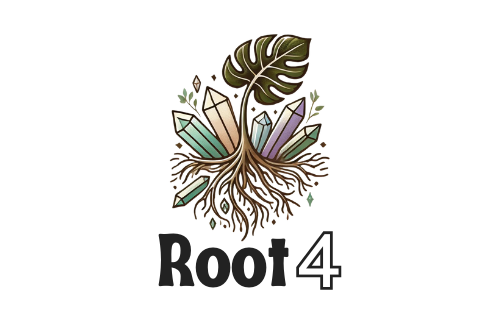
Leave a Reply